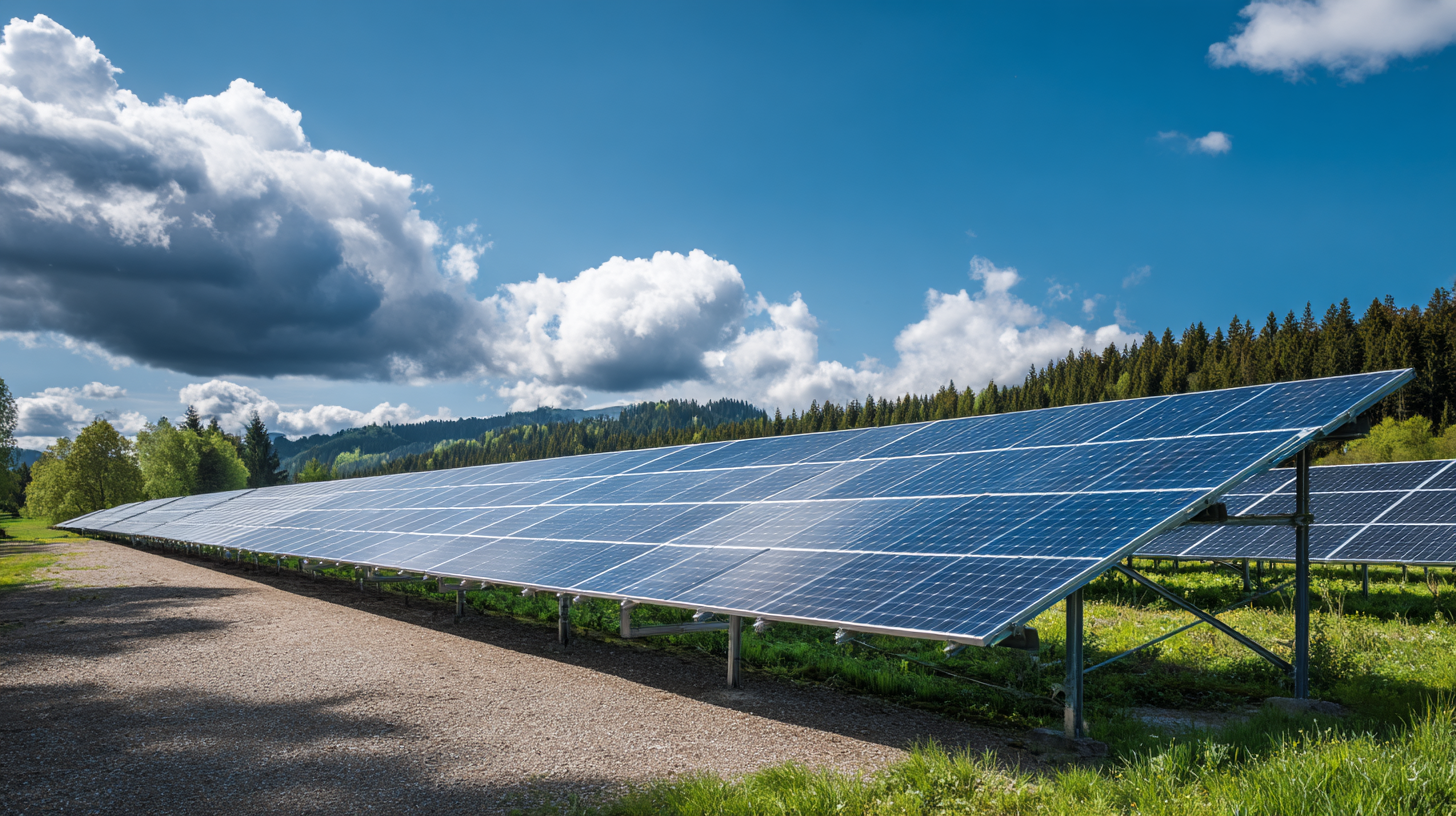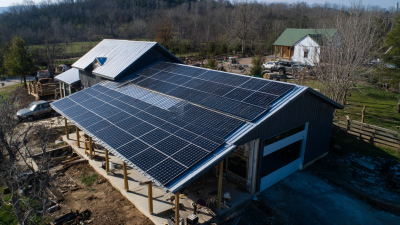As the world grapples with the dual challenges of energy demand and climate change, solar electricity emerges as a pivotal solution poised to meet 40% of global energy needs by 2030. According to the International Energy Agency (IEA), solar power generation is forecasted to expand at a staggering rate, potentially exceeding 1,000 gigawatts (GW) of new capacity annually. This exponential growth can be attributed to significant advancements in photovoltaic technology, reducing costs by over 80% in the last decade, as reported by BloombergNEF. Furthermore, the Global Solar Council anticipates that increased government incentives and a global shift towards renewable energy will catalyze the installation of solar systems worldwide. With these developments, solar electricity not only offers a sustainable alternative but also promises to reshape the global energy landscape, providing cleaner and more reliable power for millions.

The rise of solar adoption marks a significant shift in the global energy landscape, reflecting a broader trend toward renewable energy sources. Recent statistics reveal that the capacity of solar energy is expected to triple by 2030, driven by technological advancements and decreasing costs. In many regions, solar power has already become the cheapest source of electricity, enabling countries to diversify their energy portfolios and reduce reliance on fossil fuels. This transition is not only environmentally motivated; it’s increasingly economically advantageous as well.
Moreover, government policies and incentives are playing a crucial role in this growth trend. Many countries are implementing aggressive targets for renewable energy, thus spurring investment in solar technologies. Data indicates a sharp rise in residential solar installations, as homeowners seek to minimize their energy bills and increase energy independence. The growing awareness of climate change and the urgency to address it have further bolstered public support for solar initiatives. As a result, by 2030, solar electricity is not just a possibility but a likely reality that could meet 40% of global energy needs.
The financial benefits of solar energy are becoming increasingly compelling for consumers, as the technology matures and implementation costs decline. Solar power installation has become more affordable due to advancements in photovoltaic systems and economies of scale in manufacturing. Homeowners can drastically reduce their monthly utility bills by investing in solar panels, and many regions have government incentives or rebates that further lower initial costs. This combination of lower costs and savings on electricity bills makes solar energy an attractive option for budget-conscious consumers.
Moreover, solar energy can mitigate exposure to rising energy prices. As traditional energy sources become increasingly volatile, having a renewable energy solution like solar provides stability for households. By harnessing the sun's power, consumers can achieve energy independence and protect themselves from fluctuating fossil fuel prices. This financial resilience will contribute significantly to the projected growth of solar electricity, positioning it as a major player in the future energy landscape. With both cost-effectiveness and long-term savings, solar energy stands out as a smart investment for both individual consumers and the global market.

Recent advancements in solar photovoltaic (PV) technologies are paving the way for solar electricity to meet 40% of global energy needs by 2030. Notably, perovskite solar cells have emerged as a groundbreaking innovation, offering higher efficiency rates and lower production costs. Research indicates that perovskite cells can achieve efficiencies over 25%, compared to traditional silicon cells that typically fall below 22%. This leap in technology not only enhances the viability of solar power but also contributes to a significant reduction in dependence on fossil fuels, thereby assisting in climate change mitigation.
In addition to perovskite cells, the integration of artificial intelligence (AI) into solar energy systems is driving efficiency improvements. AI algorithms optimize energy consumption and increase power generation from solar panels, enhancing their overall performance. Furthermore, the development of transparent solar panels and floating solar PV systems showcases innovative approaches that can yield greater energy outputs from less space. A recent analysis highlights that floating solar installations can provide up to 30% more energy compared to traditional ground-mounted systems due to their cooling effect from water surfaces. Collectively, these technological innovations are revolutionizing the solar industry, making it a cornerstone of sustainable energy solutions for the future.
Government policies and incentives are playing a crucial role in accelerating the adoption of solar electricity worldwide. As countries recognize the urgent need to transition to renewable energy sources, many governments are implementing favorable policies such as tax credits, subsidies, and feed-in tariffs. These financial incentives not only reduce the initial installation costs for solar systems but also encourage businesses and homeowners to invest in solar technologies. By creating a supportive regulatory environment, governments are helping to make solar energy a more viable option for meeting future energy demands.
Tips for maximizing your savings: Research the specific incentives available in your region, as these can vary significantly. Many countries offer federal tax credits, and some states or municipalities provide additional rebates. Additionally, consider integrating solar energy solutions with energy storage systems to enhance your energy independence, especially as storage technology continues to improve.
As investment in solar energy grows, so does the focus on innovative financing models. Power Purchase Agreements (PPAs) and community solar programs are emerging as effective approaches for individuals and businesses that may not have the upfront capital to install solar panels. These models provide access to solar power without the initial financial burden, allowing more people to participate in the clean energy revolution and helping to push solar electricity closer to powering 40% of global energy needs by 2030.
 The environmental impact of solar energy is profound, making it a cornerstone in the pursuit of sustainability goals. By harnessing the sun's abundant energy, solar power drastically reduces reliance on fossil fuels, which are major contributors to greenhouse gas emissions. Transitioning to solar energy not only mitigates climate change but also helps preserve natural resources, as it necessitates less water than traditional energy generation methods. This shift fosters healthier ecosystems and enhances biodiversity, creating a cleaner environment for future generations.
The environmental impact of solar energy is profound, making it a cornerstone in the pursuit of sustainability goals. By harnessing the sun's abundant energy, solar power drastically reduces reliance on fossil fuels, which are major contributors to greenhouse gas emissions. Transitioning to solar energy not only mitigates climate change but also helps preserve natural resources, as it necessitates less water than traditional energy generation methods. This shift fosters healthier ecosystems and enhances biodiversity, creating a cleaner environment for future generations.
Additionally, solar energy plays a significant role in promoting energy independence and security. By investing in solar infrastructure, countries can harness local resources rather than relying on imported fuels, thereby reducing geopolitical tensions and economic vulnerability associated with energy supply chains. The scalability of solar technology allows for implementation in diverse settings, from urban rooftops to remote rural areas, ensuring that clean energy can reach a wide demographic. As global populations continue to grow, the strategic deployment of solar energy systems is essential for achieving sustainable development while maintaining ecological balance.





